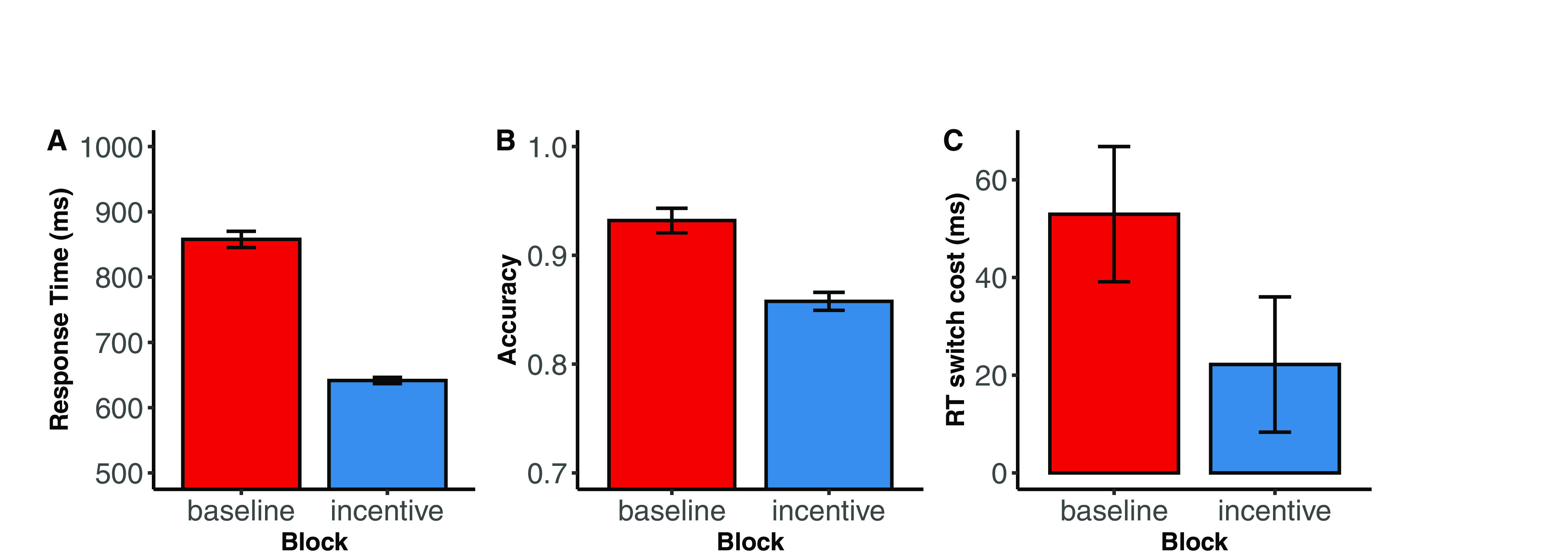Figure 2.

RT, accuracy, and RT switch costs between baseline and incentive blocks. A, Comparison of RT in baseline and incentive task blocks demonstrates that motivational incentives are associated with a significant reduction in RTs (ms) between baseline and incentive blocks for younger adults (t(45) = 16.298, p < 0.001). In other words, younger adults are faster with incentives compared with without incentives. B, Younger adults showed a significant drop in accuracy between baseline and incentive blocks (t(45) = 7.582, p < 0.001). Together, these data demonstrate that the participants are both faster and more accurate with monetary and liquid motivational incentives. This shift down the speed-accuracy curve to increase reward rate demonstrates that participants increase their effort in accordance with the bundled incentives. All error bars in all plots indicate 95% CIs. C, RT switch costs were significantly reduced between baseline and incentive blocks, thus revealing that increased recruitment of cognitive control during the incentive blocks relative to the baseline blocks (t(45) = 2.956, p = 0.005). For mixed model results of RT switch costs by motivational incentives, see Extended Data Figure 2-1.
